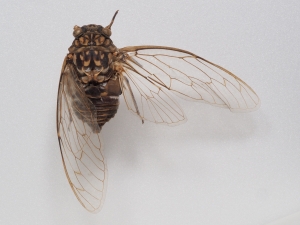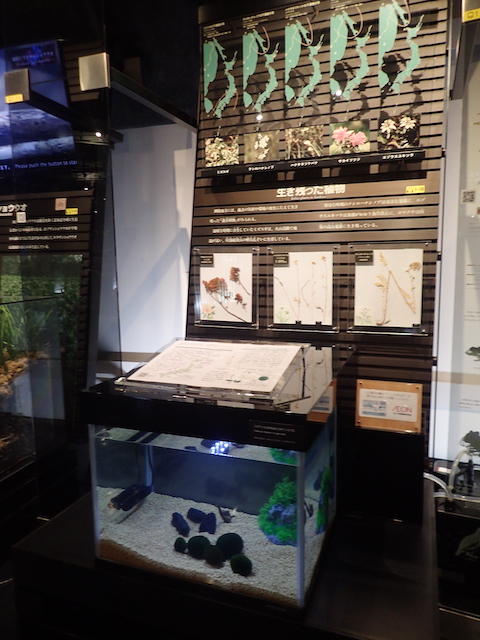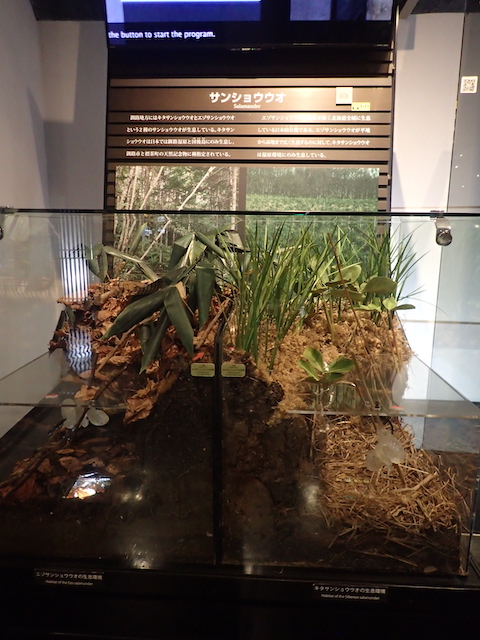1-9~12 Flora and Fauna in Kushiro 2
1-9 Cool-Climate Insects and Survivors of the Ice Age
The climate of the Kushiro Wetlands, which has changed little over the past 6,000 years, supports many species of cool-climate insects. There are over 1,000 species of insects living in the wetlands; some are remnants of the last ice age, while others have migrated to the area more recently.
The impact of climate change
Many of the insects in the Kushiro region once inhabited a much wider area of Hokkaido. As temperatures have increased across much of the island, these insects have migrated to the cool wetlands of Kushiro, where annual temperatures average 5.8°C. These migration patterns show how the earth’s climate and biodiversity is changing.
Ice-age survivors
Several insect subspecies in the Kushiro Wetlands have been in the area since the last ice age, including the subarctic darner dragonfly (Aeshna subarctica) and the Japanese water spider (Argyroneta aquatica japonica). These are almost identical to subspecies found in Europe and Eurasia.
Protected species
The wetlands are home to endangered insects protected as Natural Living Monuments of Japan, including the ezokaojiro tonbo dragonfly (Leucorrhinia intermedia ijimai) with its distinctive white face, the akameito tonbo damselfly (Erythromma humerale), and the min-min zemi cicada (Hyalessa maculaticollis). Although most of the area is too cold for it to live in, the min-min zemi thrives on the Wakoto Peninsula on Lake Kussharo, its northernmost habitat in Japan, thanks to the peninsula’s geothermal heat.

1-10 Cool-Climate Plants and Ice-Age Survivors
Some of the plant species found in Kushiro spread to Hokkaido from Eurasia during the glacial periods of the last ice age. Many of these are normally found in alpine environments, but have survived in the Kushiro Wetlands because of its cool climate and the frequent fog that blankets the area in summer.
Flowers of the wetlands
During summer, the wetlands are dotted with the delicate purple flowers of the Kushiro hanashinobu (Polemoniaceae), a variety of phlox. This is a variation of a subspecies that grows on the island of Sakhalin to the north, and likely spread to Hokkaido during the ice age.
Cuckooflower (Cardamine pratensis) flourishes in the wetlands of eastern Hokkaido. It is also found in parts of the Eurasian continent and North America, suggesting that it, too, arrived in Hokkaido during the last ice age.
Mysterious marimo
Marimo are rare spherical growth forms of a species of freshwater algae (Aegagropila linnaei). Water motion can cause these filamentous algae to grow in spheres, attaining a size of up to 30 centimeters in diameter. The algae filaments grow in Lake Shirarutoro and Lake Toro on the outskirts of the Kushiro Wetlands, but the spherical marimo are only found in northern Kushiro’s Lake Akan.

1-11 The Siberian Salamander: Survival Expert
The Siberian salamander (Salamandrella keyserlingii) is remarkable for its adaptation to temperatures as cold as 40°C below zero. It hibernates in winter, surviving in a frozen state, and then thaws out in spring. These amphibians are found across northern Russia from the Urals in the west to the Kamchatka Peninsula in the far east. In Japan, however, Siberian salamanders are only found around the Kushiro Wetlands. The species likely crossed from Eurasia to Hokkaido via the island of Sakhalin during the last ice age.

1-12 Studying the Wetlands
Regular surveys offer insight into the habitats of insects living in the Kushiro Wetlands. The staff of the Kushiro City Museum, wildlife experts, and local schoolchildren join the survey efforts every four years, demonstrating the importance of the wetlands to the community.
Since the surveys began in 1971, the participants have found 1,150 species of insects, including 46 dragonfly species and 84 butterfly species, many of which are displayed at the museum. The research played a role in the area being designated as a conservation site under the Ramsar Convention, an international treaty to conserve wetland areas. The Kushiro Wetlands are part of Kushiroshitsugen National Park.
This English-language text was created by the Japan Tourism Agency.
このページに関するお問い合わせ
生涯学習部 博物館 博物館担当
〒085-0822 北海道釧路市春湖台1番7号 博物館
電話:0154-41-5809 ファクス:0154-42-6000
お問い合わせは専用フォームをご利用ください。
